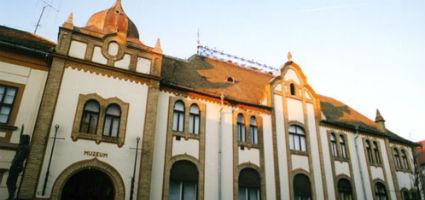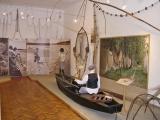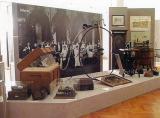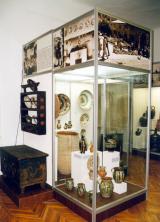2024. April 19. Friday
István Türr Museum - Baja - Szentistván
 |
Address: 6500, Baja - Szentistván Deák Ferenc utca 1.
Phone number: (79) 324-173
E-mail: bajaimuzeum@gmail.com
Opening hours: 15.03-19.12.: Wed-Sat 10-16
|
The chance to found a museum in Baja first occoured in 1914. Right before World War I Frigyes Déri had offered his valuable collection of cultural history and his library to the town of his childhood. He had planned to build a culture house, so he bought a site and gifted it to Baja. There would have taken place a museum and a library in the building.
Unfortunately, because of the outbreak of the war, accomplishment of the plans were postponed to the times of peace. However, in 1919 Baja came under Serbian siege, and Mr. Déri took his gift back and presented the collection to Debrecen.
The museum of Baja came to exist between the two world wars. In the 1930'ies private collections were formed of the modern Hungarian fine arts. Painer István Nagy played an important role in the formation of the collection. He had settled in Baja just a few years prior his death. Also, collector and writer Imre Oltványi contrebuted much to the museum, for by 1936 he had collected materials that became the base of the modern Hungarian art gallery in Baja. (For instance, pictures of Jenő Barcsay, Béla Czóbel, József Egry, Noémi Ferenczy, Béla Kádár, János Kmetty, Ödön Márffy, István Szőnyi are exhibited.)
Besides the gallery, the legal committee of Baja in October 1936 decided about the founding of a museum, too. That is how a contemporary collection of fine arts brought about the museum of Baja.
The István Türr Museum mostly collects and exhibits materials representing the county of North-Bácska.
Among the more than 40 000 pieces of the collection there are a considerable number from the times of the great migration. This collection keeps the relics of the only Sarmatian cemetary excavated in Europe.
Besides Hungarians, there are other nations in North-Bácska, so the etnographic collection of the museum is rather versatile. Especially important to mention the popular fishing collection of the museum.
In the historical part of the collection there can mostly be found items representing the history of the town. Especially valuable the painted shooting target collection which numbers nearly 50 pieces.
Besides the so-called Oltványi collection, the fine art collection also includes outstanding works of the contemporary Hungarian fine arts.
The library and archives will give assistance to the visitors about the researches made in the field of local history.
Visitors can see the collection of the István Türr Museum within the frame of two permanent exhibitions. One of the collections is entitled 300 years of Baja as a town (ground floor), the other is entitled Ethnic Groups in Baja's Vicinity (first floor).
Unfortunately, because of the outbreak of the war, accomplishment of the plans were postponed to the times of peace. However, in 1919 Baja came under Serbian siege, and Mr. Déri took his gift back and presented the collection to Debrecen.
The museum of Baja came to exist between the two world wars. In the 1930'ies private collections were formed of the modern Hungarian fine arts. Painer István Nagy played an important role in the formation of the collection. He had settled in Baja just a few years prior his death. Also, collector and writer Imre Oltványi contrebuted much to the museum, for by 1936 he had collected materials that became the base of the modern Hungarian art gallery in Baja. (For instance, pictures of Jenő Barcsay, Béla Czóbel, József Egry, Noémi Ferenczy, Béla Kádár, János Kmetty, Ödön Márffy, István Szőnyi are exhibited.)
Besides the gallery, the legal committee of Baja in October 1936 decided about the founding of a museum, too. That is how a contemporary collection of fine arts brought about the museum of Baja.
The István Türr Museum mostly collects and exhibits materials representing the county of North-Bácska.
Among the more than 40 000 pieces of the collection there are a considerable number from the times of the great migration. This collection keeps the relics of the only Sarmatian cemetary excavated in Europe.
Besides Hungarians, there are other nations in North-Bácska, so the etnographic collection of the museum is rather versatile. Especially important to mention the popular fishing collection of the museum.
In the historical part of the collection there can mostly be found items representing the history of the town. Especially valuable the painted shooting target collection which numbers nearly 50 pieces.
Besides the so-called Oltványi collection, the fine art collection also includes outstanding works of the contemporary Hungarian fine arts.
The library and archives will give assistance to the visitors about the researches made in the field of local history.
Visitors can see the collection of the István Türr Museum within the frame of two permanent exhibitions. One of the collections is entitled 300 years of Baja as a town (ground floor), the other is entitled Ethnic Groups in Baja's Vicinity (first floor).


